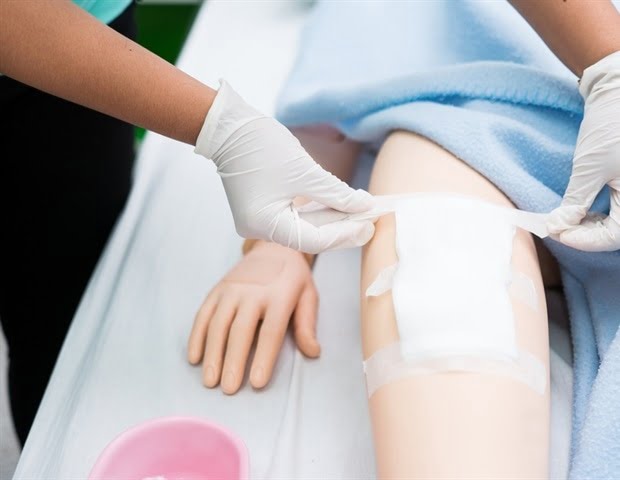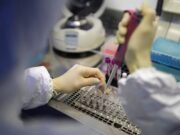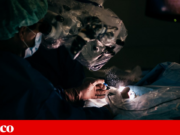
 By Sarah MooreMar 20 2020
By Sarah MooreMar 20 2020Scientists at the University of California have revealed how skin cells prepare in order to heal wounds. The study that was published this week in the journal Cell Reports will potentially lead to a better understanding of wound healing in diabetic patients.
 Image Credits: Bangkoker / Shutterstock.com
Image Credits: Bangkoker / Shutterstock.com
Uncovering the cellular basis of wound healing
For the first time, a comprehensive review has been published that looks a the major changes mammalian skin cells go through prior to healing wounds. Researchers at the University of California have discovered how our skin cells prepare for the vital process of healing wounds.
The study’s findings will provide a basis for further explorations into the normal process of wound healing in various diseases in which it is compromised or altered, like in diabetes, where wounds are often slow to heal, don’t heal well, or never completely heal, putting people at an elevated risk of infection.
A 'hierarchical-lineage' model of skin
In the publication, the California-based team lays out each of the major changes that happen in cellular heterogeneity when a cell goes from a normal state to that of a cell involved in wound healing. It is the first publication of its kind, making it a significant, comprehensive piece of work.
The efforts of biologists, physicists, and mathematicians, all at the University of California combined to create this comprehensive look at wound healing at the level of the cell. The team was also assisted further by those at the NSF-Simons Center for Multiscale Cell Fate Research and the UCI Skin Biology Resource-based Center which is funded by the National Institute of Arthritis & Musculoskeletal & Skin Diseases.
Entitled "Defining epidermal basal cell states during skin homeostasis and wound healing using single-cell transcriptomics," the groundbreaking study appeared this week in the life sciences journal Cell Reports.
Importantly, the paper has revealed four distinct transcriptional states that are expressed by the epidermal basal layer. These states form part of the model of epidermal homeostasis, also referred to as the stable state of the skin, as part of a proposed 'hierarchical-lineage' model, helping to provide definitive conclusions for a long-running debate in the field of skin stem cell research.
Establishing a comprehensive breakdown of basal cell dynamics
Up until this point, despite a wealth of research, scientists have had a limited understanding of the transcriptional heterogeneities in both epithelial stem cells and progenitor cell compartments. These are the cells that are responsible for maintaining skin tissue and initiating wound healing.
Studies previously conducted to investigate the nature of these cells have probed basal cell heterogeneity in both stem and progenitor potential. However, until now, there has been no comprehensive breakdown of the basal cell dynamics occurring during differentiation.
To address this, scientists used single-cell RNA sequencing in combination with RNAScope and fluorescence lifetime imaging. In doing so, they were able to distinguish a total of three non-proliferative basal cell states and one proliferative basal cell state that occurs in homeostatic skin.
These states differ in metabolic preference and they are spatially partitioned while wound re-epithelialization takes place, the process which allows skin and mucous membranes to heal wounds by replacing the damaged or lost superficial epithelial cells.
The tailoring of proliferation and differentiation dynamics of resident stem cells is essential for epithelial tissue maintenance in specific homeostatic and regenerative scenarios. Adjusting these dynamics could have a significant impact in facilitating wound healing in conditions that are characterized by impaired wound healing, such as diabetes.
The current study provides an in-depth, systematic view of epidermal cellular dynamics that fits into the updated “hierarchical-lineage” model of homeostasis they propose.
Haensel, D. et al. (2020). Defining Epidermal Basal Cell States during Skin Homeostasis and Wound Healing Using Single-Cell Transcriptomics. Cell Reports. DOI: https://doi.org/10.1016/j.celrep.2020.02.091














